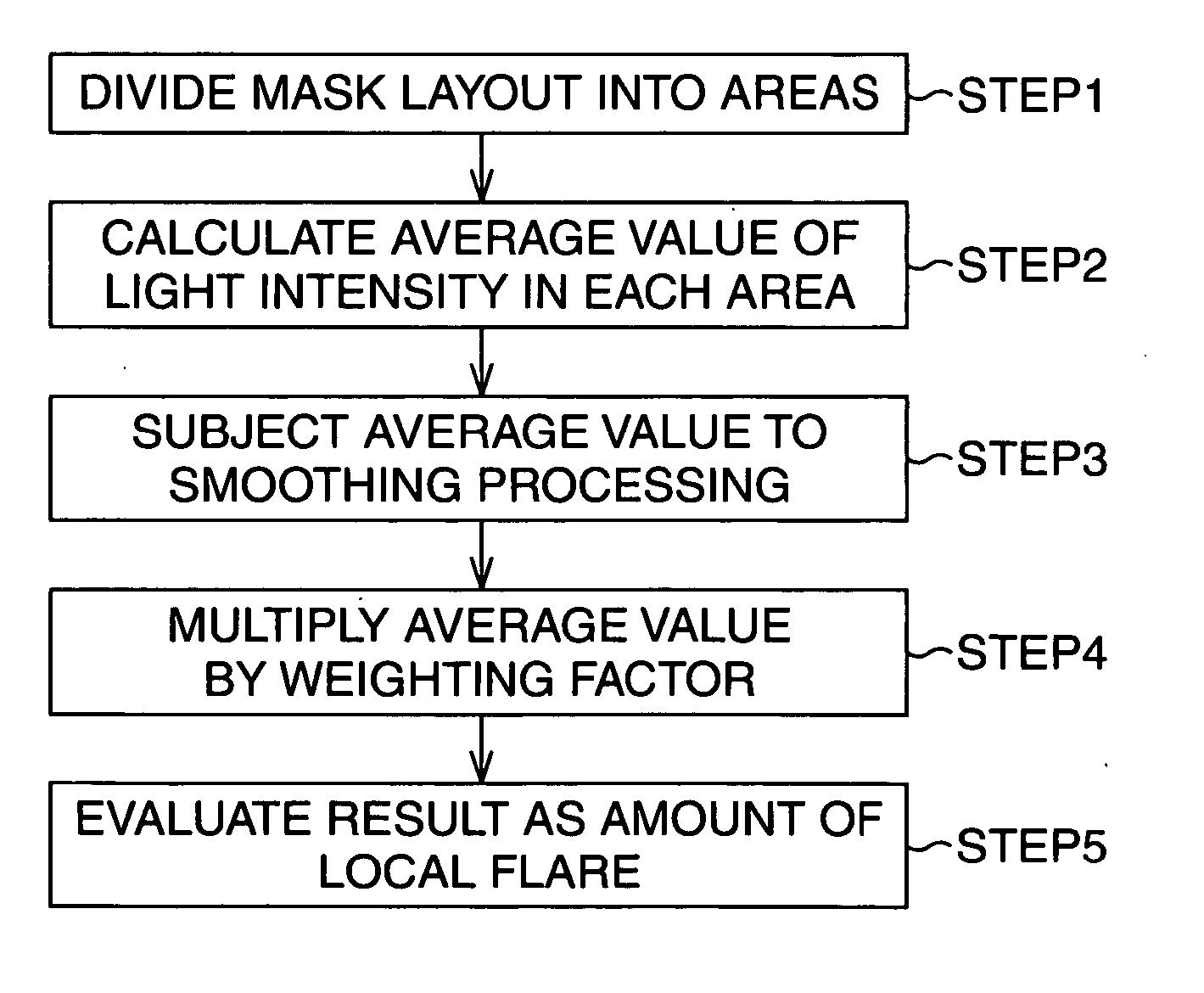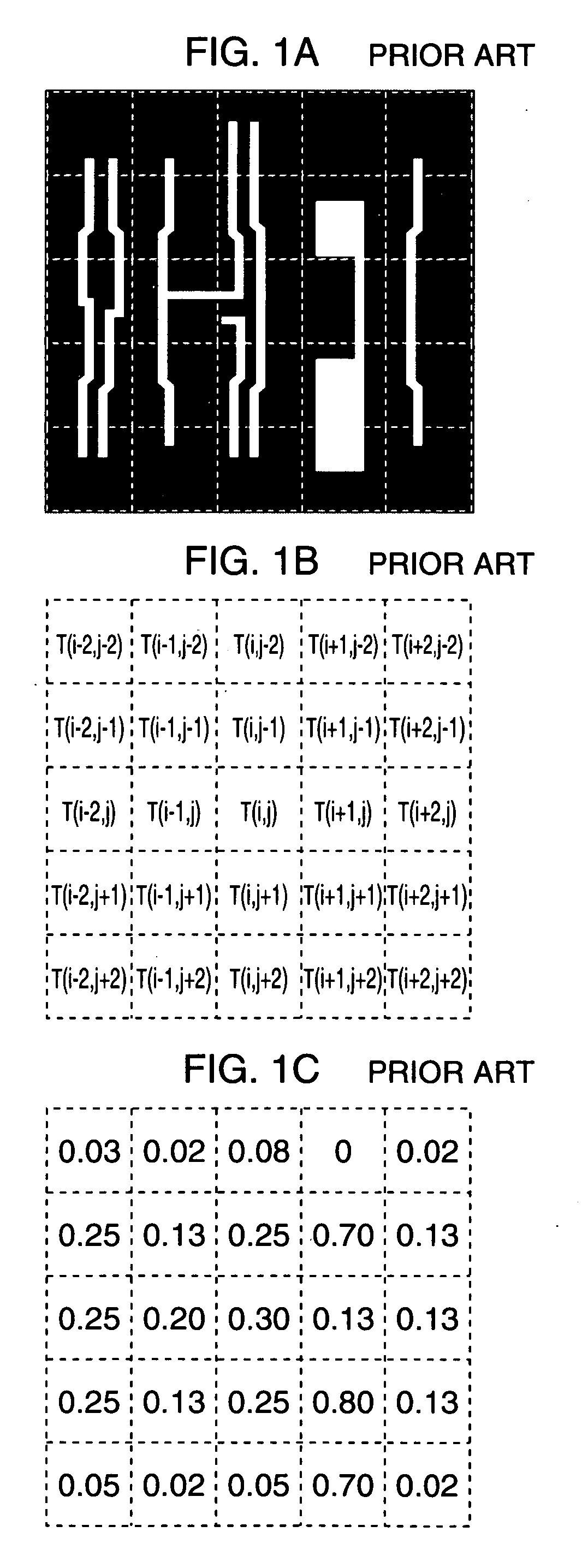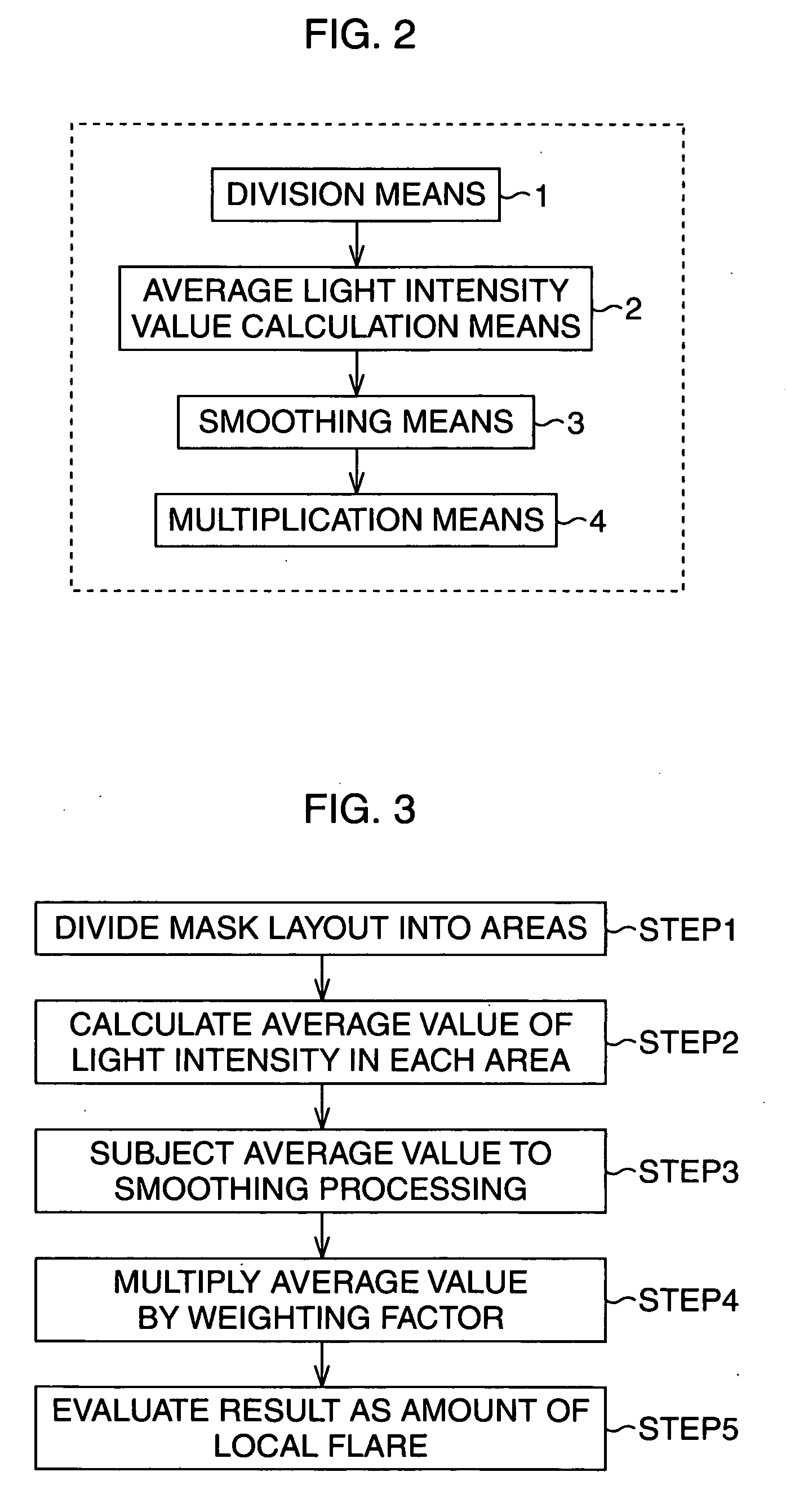Method and equipment for simulation
a technology of simulation and equipment, applied in the field of simulation methods and equipment, can solve the problems of inability to obtain high accuracy, unexpected deformation, and large amount of local flare, and achieve the effects of high accuracy, high reliability, and easy and precise correction
- Summary
- Abstract
- Description
- Claims
- Application Information
AI Technical Summary
Benefits of technology
Problems solved by technology
Method used
Image
Examples
first embodiment
[0051] (First Embodiment)
[0052] In the first embodiment, the average value (relative value) of light intensity of a photo mask having a layout shown in FIG. 8 is obtained with the use of the method according to the present invention. The photo mask has a line-and-space pattern in which the width of an opening 11 is equal to that of a light shielding portion 12. It is assumed that the length “L” of the opening 11 is much longer than the width “W” thereof.
[0053]FIG. 9 is a graph of characteristics showing the relation between a line pitch in the photo mask and the value of light intensity.
[0054]FIG. 9 shows the average values of light intensity calculated by a method of the present invention, in relation to line pitches “P”. The average values of intensity transmittance according to a conventional method are also put therein for comparison purpose. In this embodiment, the average value is calculated on the condition that “NA” is 0.7, an exposure wavelength is 193 nm, and an interfer...
second embodiment
[0056] (Second Embodiment)
[0057] In the second embodiment, the amount of local flare calculated by the method of the present invention is added to an optical image by optical simulation, to obtain an optical image in consideration of local flare. In this embodiment, it is assumed that the ratio of the amount of local flare to the intensity of the optical image is 5%.
[0058]FIG. 10 shows the shape of a photo mask used in the calculation of this method. The photo mask identical to that of FIG. 7 has a line-and-space pattern in which the width of an opening 11 is equal to that of a light shielding portion 12 and has a line pitch of 0.5 μm. It is assumed that the length “L” of the opening 11 is much longer than the width “W” thereof.
[0059]FIG. 11 is a graph of characteristics showing the relation between the position in the photo mask and the value of light intensity. The position in FIG. 11 corresponds to the position in the photo mask along the broken line I-I of FIG. 10.
[0060]FIG. ...
PUM
| Property | Measurement | Unit |
|---|---|---|
| wavelength | aaaaa | aaaaa |
| exposure wavelength | aaaaa | aaaaa |
| width | aaaaa | aaaaa |
Abstract
Description
Claims
Application Information
 Login to View More
Login to View More - R&D
- Intellectual Property
- Life Sciences
- Materials
- Tech Scout
- Unparalleled Data Quality
- Higher Quality Content
- 60% Fewer Hallucinations
Browse by: Latest US Patents, China's latest patents, Technical Efficacy Thesaurus, Application Domain, Technology Topic, Popular Technical Reports.
© 2025 PatSnap. All rights reserved.Legal|Privacy policy|Modern Slavery Act Transparency Statement|Sitemap|About US| Contact US: help@patsnap.com



